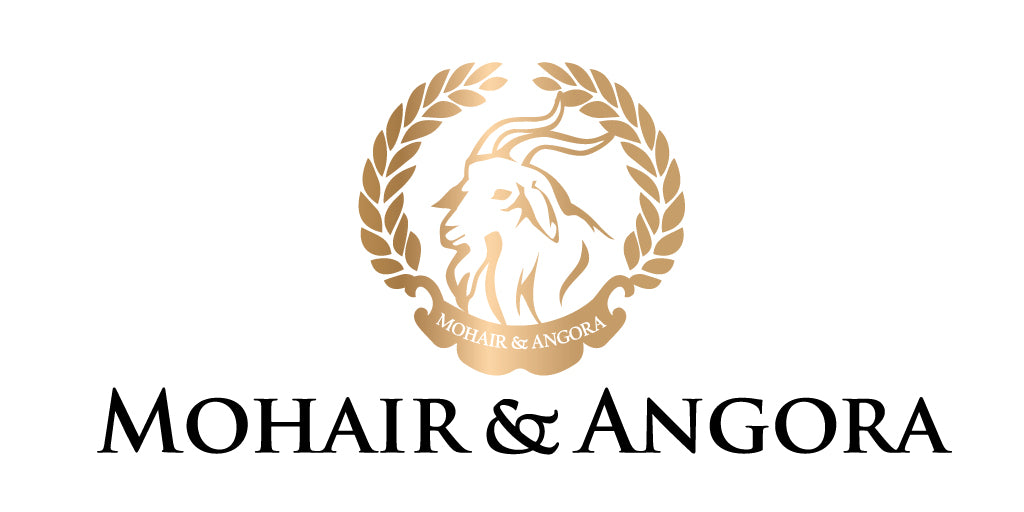Fine Fibers: Mohair, Wool and Cashmere
Wool
Source: Wool is derived from the fleece of sheep. Different breeds produce various types of wool, with Merino being one of the finest and most popular.
Fiber Diameter: Wool fibers typically range from 18 to 40 microns. Merino wool is at the finer end of this spectrum, making it softer.
Characteristics:
- Warmth: Wool is known for its excellent insulation properties, keeping the wearer warm in cold weather.
- Durability: Wool is strong and elastic, resistant to wear and tear.
- Texture: Depending on the type, wool can range from soft (like Merino) to coarse.
- Care: Wool garments often require careful handling and washing, sometimes needing to be dry cleaned to maintain their shape and quality.
- Versatility: Used in a variety of products including clothing (sweaters, suits), blankets, and upholstery.
Environmental Impact: Wool is biodegradable and renewable, making it an environmentally friendly choice if sourced sustainably.
Mohair
Source: Mohair comes from the fleece of Angora goats.
Fiber Diameter: Mohair fibers are typically 25-40 microns, similar to some types of wool.
Characteristics:
- Luster: Mohair has a natural sheen, making it visually appealing.
- Strength: Mohair is stronger than wool due to its long staples (4-6 inches), providing durability and resilience.
- Softness: Mohair is smoother than wool, offering a silky feel.
- Insulation: Excellent for both warmth in winter and coolness in summer due to its breathability.
- Care: Generally requires gentle washing, sometimes hand-washing or dry cleaning to maintain its quality.
- Applications: Used in high-end fashion (sweaters, scarves), as well as in home textiles like carpets and upholstery.
Environmental Impact: Like wool, mohair is biodegradable and renewable, provided the farming practices are sustainable and ethical.
Cashmere
Source: Cashmere is obtained from the undercoat of Cashmere goats, primarily found in regions like Mongolia, China, and Iran.
Fiber Diameter: Cashmere fibers are very fine, typically 14-19 microns, making it one of the softest natural fibers.
Characteristics:
- Softness: Renowned for its luxurious softness, cashmere is extremely gentle on the skin.
- Warmth: Provides exceptional warmth while being lightweight, making it ideal for winter wear.
- Strength: While soft, cashmere is less durable than wool and mohair, often requiring careful maintenance.
- Texture: Extremely fine and smooth, with a plush feel.
- Care: Requires careful handling, often hand-washing or dry cleaning, to maintain its texture and longevity.
- Applications: Used in high-end fashion items such as sweaters, shawls, and accessories.
Environmental Impact: Cashmere production can have significant environmental impacts due to overgrazing by Cashmere goats, leading to land degradation. Sustainable and ethical farming practices are essential to mitigate these effects.
Summary Comparison
| Feature | Wool | Mohair | Cashmere |
|---|---|---|---|
| Source | Sheep | Angora goats | Cashmere goats |
| Fiber Diameter | 18-40 microns | 25-40 microns | 14-19 microns |
| Softness | Varies, Merino is soft | Smoother than wool | Extremely soft |
| Strength | Strong and elastic | Stronger, long staples | Less durable |
| Warmth | Excellent insulation | Breathable, all-season use | Exceptional warmth, lightweight |
| Luster | Moderate | High natural sheen | Moderate |
| Care | Often needs dry cleaning | Gentle washing, sometimes dry cleaning | Hand-washing, dry cleaning |
| Applications | Clothing, blankets, upholstery | High-end fashion, home textiles | High-end fashion items |
| Environmental Impact | Biodegradable, renewable | Biodegradable, renewable | Environmental concerns due to overgrazing |
Each of these fibers has its unique advantages and applications, catering to different needs and preferences in fashion and textiles.


Leave a comment
This site is protected by hCaptcha and the hCaptcha Privacy Policy and Terms of Service apply.